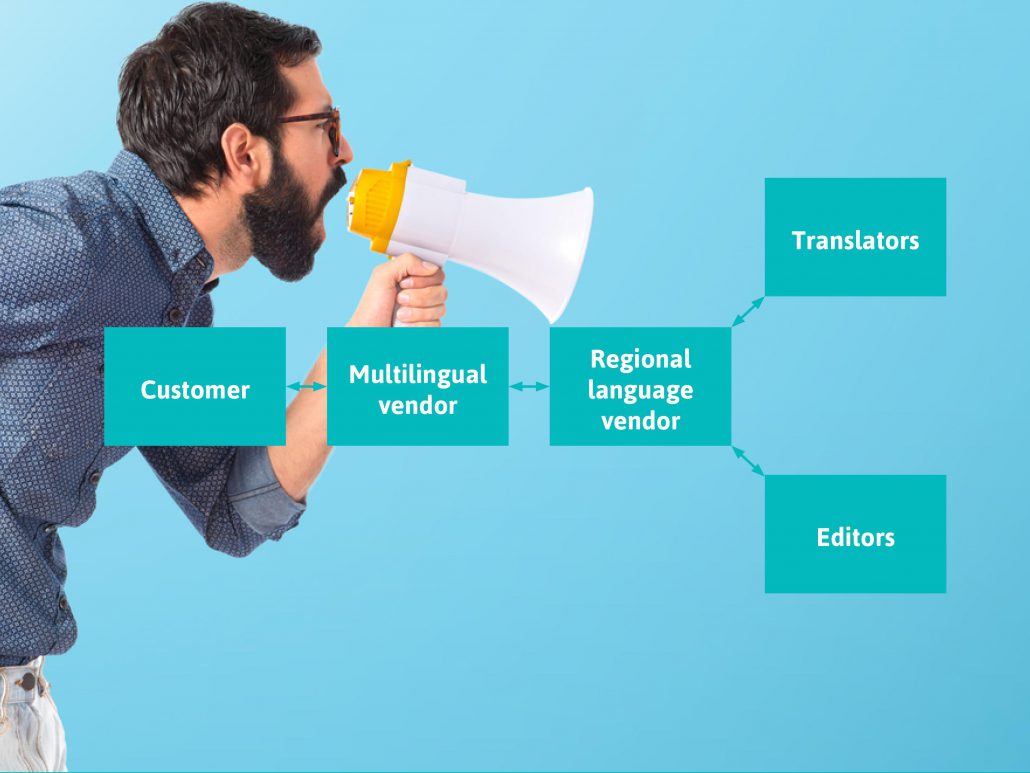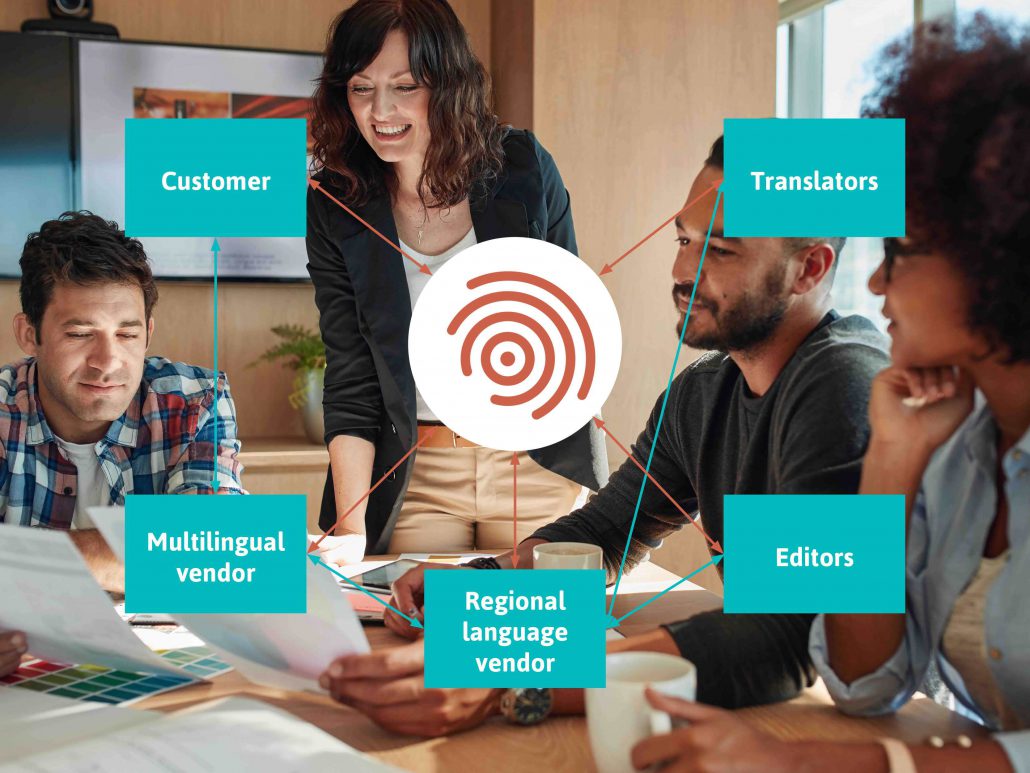The importance of team culture in the translation supply chain
What is team culture? There are probably tons of definitions out there but in its most basic form, it’s the way in which people work together towards a common goal and how they treat each other along the way. We know that people who trust each other and who are highly motivated, tend to produce better work. Good team culture is all about creating a collaborative environment where everybody knows what that common goal is, where they can communicate freely with each other, where they can share knowledge and, very importantly, support each other. It’s about creating a safe working environment where people feel they are a respected part of the team, and have the confidence to ask questions and raise issues.
In other words, good team culture requires communication, transparency and trust. In this article, I’d like to share how a collaborative approach to translation can really boost translation quality, increase translation speed and create more consistency across multiple languages.
The traditional translation supply chain
Unfortunately, the traditional translation supply chain has been structured in such way that developing team culture is almost impossible. Let’s take the image below as an example of a typical supply chain. I’ve added a customer, who works with a multilingual vendor, who then outsources to a regional language vendor, who in turn employs individual linguists. Of course, not every supply chain looks exactly like this, but it’s a fairly typical set-up for large companies who localise globally:
You can see that it’s rather linear with the customer (or translation buyer) at the one end, and the linguists carrying out the actual work all the way at the other end. Content that needs to be translated (and any information about that content, such as instructions, reference materials etc.) trundles along that one path. The different stakeholders in the supply chain only ever communicate directly with the person or company that’s immediately adjacent to them. Passing on any information, asking questions and answering questions can be a slow and cumbersome process, and information can easily get lost. Interestingly, there is also no direct interaction between the translators and editors.
It’s easy to see why, when it comes to working on translation projects that involve external suppliers and stakeholders, that sense of team culture can quickly go out of the window. Many translation buyers slip into that buyer-supplier mindset when ordering translation services, rather than treating the localisation supply chain like a team.
The traditional translation supply chain is also not very transparent. The customer typically deals with a translation agency, hands over the documents or content, and then receives it back at the end of the translation process. The customer can’t see what the supply chain actually looks like, who is working on the content, or how the translations are progressing.
And this lack of transparency can lead to a lack of trust. If we don’t know who’s working on the content, then there is no way of communicating with them, it’s hard to help them do their job and it’s hard to build that trust and peace of mind that everyone is working towards a common goal.
How translation buyers can foster team culture in the translation supply chain
Fortunately, there are plenty of things translation buyers can do to create better ways of communicating, increase transparency and foster collaboration. Here are just a few examples:
1) Leverage technology to promote transparency
If you work for a company that has a large amount of content to translate and a clear localisation strategy, chances are you are working with a translation management system, also called a TMS. There are a myriad of TMS’s available on the market today, but our absolute favourite is Smartling. Smartling launched in 2009 and really changed the way that the translation supply chain is structured, a) by putting the technology in the hands of the customer and b) by placing the content right at the heart of the entire supply chain. Content is no longer being passed back and forth along the linear supply chain. Instead, it sits in the TMS where everyone can access it in one place and can contribute and collaborate – the customer, the translation agencies and the individual linguists. If you look at the individual stakeholders within this model, everyone is connected to everyone else via the platform – with only two degrees of separation.
If you are in the process of evaluating translation management systems, or if you are about to onboard with a new translation vendor, ask questions about what tools and processes they have in place to ensure team culture.
2) Invest in onboarding
If you don’t already have a style guide and glossary for each of your target markets, I would really encourage you to invest some time in getting these set up at the beginning of your project. A style guide ensures that your brand voice is localised appropriately, while a glossary ensures consistency of terms across all of your translated assets. If you work with marketing/sales teams in-country, then you can involve them in approving market-specific style guides before they are made available to translators. And if you don’t have an established team in-country, then work with your translation provider to give you guidance on what’s appropriate in that country for your type of target audience.
You should also consider a kick-off call with your localisation team before your first project to introduce your company, share information about your brand voice and share what’s important to you as a company.
3) Share your knowledge
‘As translators, we’re always the last to know’ – this is a complaint we often hear in our industry. Companies spend months creating their original content, it goes through several rounds of revisions and gets refined along the way, but when it comes to translation, it needed to be done yesterday – but delivered to the same quality standards. Whenever you can, work with your localisation team and give them a heads-up that content might be coming. Even if it’s vague, even if you don’t know how much volume or exactly when it’s coming, you just know it’s coming… let your localisation team know. Translating under pressure is never great, so empower your team by sharing what you know.
Also, do have a think about whether you might be able to provide access to your products or services for your translators. Particularly for platforms or apps where user interfaces need to be translated, it can be really helpful to see these in context and actually have a look round the platform or app.
4) Communicate
Don’t be absent during the translation process. When translators ask questions, they do that because they want to deliver the best possible translations to you. If you don’t take the time to answer, you might get a translation where the linguists had to use their best guess – which isn’t always right. This could lead to mistranslations, or just translations that are slightly off. So be kind, and respond.
And really importantly, feed back to your translators. Let your translators know if you’ve received negative feedback on their work, but bear in mind that evaluating translation quality can be very subjective – so be patient and give your translators the chance to adjust to and align with your particular expectations.
And perhaps even more importantly, don’t create a culture where no news is good news, no feedback equals good feedback. Let your translators know then they’ve done a good job, because positive reinforcement is hugely important.
5) Provide context
As the content creator, you probably know all about the source content. Who it’s aimed at. Who your buyer persona is. Where the content will be used. What its main purpose is. What other content goes along with it. All these things are really useful bits of information for the translators that will help them create better translations. So when you can, do provide that extra bit of context. Even if it’s just a short one or two sentences as part of the project brief. The more context you can provide, the better job your translators can do to make your copy sing in another language.
6) Pay fair, pay on time!
Last but not least, remember to pay your team fairly, and pay on time. In our industry, we have that juxtaposition of clients wanting to pay rock bottom rates, but expecting rockstar translation quality. It’s important to remember that experienced and talented translators demand, and deserve, to be paid well. If you are looking for brilliant professional translators, with a Master’s degree and three years’ plus experience in your particular field, and you want them to join your team, you have to be prepared to pay them fairly.
Remember, people who trust each other and who are highly motivated, tend to produce better work. Empower your linguists to do great work, and benefit from better translation outcomes from the get go. If you have any other tips on how to foster team culture in the translation supply chain, we’d love to hear your thoughts.




